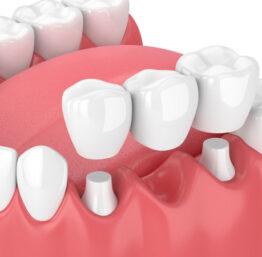- Abin George
- 0 Comments
Caps and Bridges are two common restorative dental treatments used to address damaged or missing teeth. Both procedures involve the use of prosthetic dental devices to restore the function and appearance of your teeth. In this article, we’ll take a closer look at caps and bridges, including what they are, how they work, and who can benefit from these treatments.
What are Caps and Bridges?
Caps, also known as dental crowns, are prosthetic devices that cover a damaged or decayed tooth to improve its strength and appearance. A crown is typically made of porcelain, ceramic, or metal, and is custom-made to fit over your existing tooth. Crowns can also be used to cover a dental implant or support a dental bridge.
Bridges, on the other hand, are prosthetic devices that replace one or more missing teeth. A bridge is made up of two or more dental crowns on either side of the gap, with a prosthetic tooth or teeth in between. Bridges can be supported by natural teeth or dental implants, depending on the specific case.

Expert Recommendations
Benefit from Caps and Bridges:-
* Cracked or chipped teeth.
* Severely decayed teeth.
* Misshapen teeth.
* Discolored or stained teeth.
* Missing teeth.
* Uneven or gapped teeth.
The Cap and Bridge Procedure typically involves two or more appointments with your dentist. During the first appointment, your dentist will evaluate your teeth and determine if caps or bridges are appropriate for your specific case.
They may also take x-rays or impressions of your teeth to create custom-fitted caps or bridges.
If you require a crown, your dentist will first prepare your tooth by removing a small amount of enamel. They will then take an impression of your tooth to create a custom-fitted crown. In the meantime, a temporary crown may be placed over your tooth to protect it.
Once your custom-fitted crown is ready, you will return to the dentist for a second appointment. Your dentist will remove the temporary crown and replace it with the permanent crown, adjusting it as needed to ensure a comfortable fit.
If you require a bridge, your dentist will first prepare the natural teeth on either side of the gap by removing a small amount of enamel. They will then take an impression of your teeth to create custom-fitted crowns and prosthetic teeth. In the meantime, a temporary bridge may be placed over the gap to protect your teeth.
Once your custom-fitted bridge is ready, you will return to the dentist for a second appointment. Your dentist will remove the temporary bridge and replace it with the permanent bridge, adjusting it as needed to ensure a comfortable fit.

